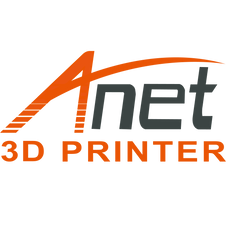Modify Anet ET4 with Linear Rail for Smoother 3D Printing
Linear rails, also named as linear slides, are becoming quite common modification options for desktop 3D printers. With modified linear rail on X axis, a 3D printer can move smoother and perform better printing. And some of the Anet users had already done the modification on ET4 3D printer. Let’s take a look at the discussions happening in Anet 3D printer official support group on Facebook and learn the ideas for linear rail modification.
Mr. Mikel Vallejo started the discussion by posting the video of the printing operation of a linear rail modified Anet ET4 3D printer. According to him, modifying the Z axis into linear rail design can make a smoother movement and free the print head from the wheels, and improve printing performance.

In his video, we can see two white parts at the two ends of the new linear rail. They’re more likely 3D printed parts.
And Mr. Keiko DK had also done the same modification on his Anet 3D printer too.

And he added an extra motor to drive the hot end on the new linear rails. Why? Because a second motor can enhance the movement of the hot end and also relieve the burden of the first motor.
And we can see a lot of green metal parts in his modification. He bought these upgrade parts from AliExpress.com.

Linear rail modification components link:
https://www.aliexpress.com/item/4000421223995.html

(Note: these components work only on Anet ET4+ and ET4 3D printer.)
According to Keiko DK, though this kit is a little expensive, it can mount the MGN 12H guide rail onto the ET4 3D printer with only a few parts to print for putting electronics on.
Why people are doing this modification? Comparing with linear rods, linear rails have a lot of advantages.
First, linear rails are much stiffer than linear rods. You can hardly bend a decent linear rail. And this feature ensures fewer backlashes and less ringing than linear rods in 3D printing.
Second, we only need one linear rail to stable and smooth run the print head on the X axis while we need at least two linear rods to prevent the hot end from rotating. A much simpler connection of a linear rail can avoid alignment issues than linear rods.
Third, linear rails usually have much tighter tolerance than linear rods. And tighter tolerance can yield smoother and consistent movement for more accurate 3D printing.
Tough linear rails are much expensive and should be handled with care, it’s still a worth trying modification for your 3D printer.
If you have the same demand, don’t hesitate to make the modification! Also, you can leave your comment in this link and Anet users will help you!
Linear rail mod discussion in Anet official Facebook group:

Leave a comment